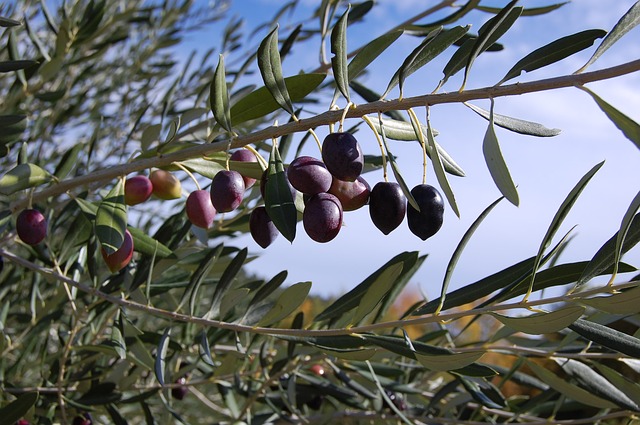
Preserving your own olives
We were lucky enough to inherit the most gorgeous old Kalamata olive tree when we bought our place. Once, my mother in law was out front and an old Italian man walked past and got chatting. He asked whether there was still an olive tree in our back yard and said that he had planted it. How amazing is that!? It must be at least 50 years old.
Each year since we’ve been here, I’ve preserved my own olives and given them as gifts at Christmas and Easter. It is the most fantastic and satisfying thing to pick your own fruit, lovingly preserve and then finally marinate them for eating. They will keep in the brine for ages and even once in the oil will last months and months. It’s fantastic to whip out a few for cooking or when guests drop by. If you don’t have a tree, I’m sure you’ve seen boxes of olives at the fruit and veg shop from time to time – buy a box or even a bag full and give this a go, you won’t look back to the vinegary and tough supermarket deli or jarred olives again. Here are a couple of ways to preserve them, the dried olives are obviously a lot less hassle and the resulting shrivelled little gems taste great – just be careful not to keep them in the salt too long or they’ll dry up beyond recognition.
“If more of us valued food and cheer and song above hoarded gold, it would be a merrier world.” – J.R.R. Tolkien
Dry Salt Curing
I usually use this method for those olives which are fully ripe on the tree and have even started to dry out a bit in the sun. Apparently this method is great for large black olives too.
You’ll need:
1 quantity of olives
rock salt, roughly equal to half the weight of your olives
1 hessian bag
oil – I use a mixture of canola or sunflower and olive oil
Method:
If you’ve picked the olives from your own tree, don’t worry about washing them, but if you’ve bought from the shop and are unsure whether pesticides have been used, give the olives a wash and then spread them out on a tray to dry completely.
Tip the olives into the hessian bag and add the rock salt. The salt doesn’t necessarily need to completely cover the olives but they do need to be surrounded, if you know what I mean. Wind the top of the bag so it is tight around the olives and salt and place over a bowl. The salt will draw moisture out of the olives and the bowl will catch the liquid, so make sure that the bag isn’t touching the bottom of bowl – you don’t want the olives to be sitting in the liquid. Give the bag a shake every couple of days and place as before over the bowl.
The olives should be ready to try in about 3 weeks, some of the bitterness should be gone. Rinse before trying. When they are dried to your liking, remove from the salt and add to a container or jar and cover with oil. As long as the olives are submerged they will keep fine in or out of the fridge. If you wish, marinate before serving by adding some herbs – fresh oregano, rosemary and/or thyme work well with lemon, garlic and/or chilli.
Brine curing
You’ll need:
1 quantity olives
1 round plastic bucket-shaped container with a lid (I got a couple from the $2 Shop a few years ago, or ask at your local Deli for their old olive buckets and they’ll gladly hand them over. Just make sure you can snuggly fit a side plate in the top as you will need this to keep the olives submerged in the brine)
1 side plate to snuggly fit the container
cooking salt
1 egg
oil – I use a mixture of canola/sunflower and olive oil
Method:
Place your olives in the bucket and cover with water. Place the plate on top to completely submerge the olives. Change the water every day for about 10 days placing the plate on top again each time. This will remove the bitterness from the olives.
Make a brine solution by dissolving salt in water which has been boiled and cooled. The water will be salty enough when an egg placed in the water floats halfway up the water.
Place your olives in the brine solution and again place the plate on top. Leave for about 3 months in a cool darkish place (it doesn’t need to be completely dark – I have mine in the my open shelved pantry).
Don’t stress if there is a layer of mould growing on the surface of the water above the plate, just use a spoon or knife to remove this before lifting the plate. The olives will be unaffected.
If the olives are way too salty for your liking, soak in water for 1 – 2 days, but remember, once you put the olives in oil, the oil will draw out some of the salt so you may find that they are not nearly as salty. You can also add some vinegar to the oil (I’d use red wine vinegar) to reduce the saltiness, but I don’t bother with this – I soak mine for 1 day and then put them in the oil. Make sure you completely submerge the olives in oil and they will keep on the pantry shelf in a sealed container. Again, marinate before serving if you wish.

No Comments